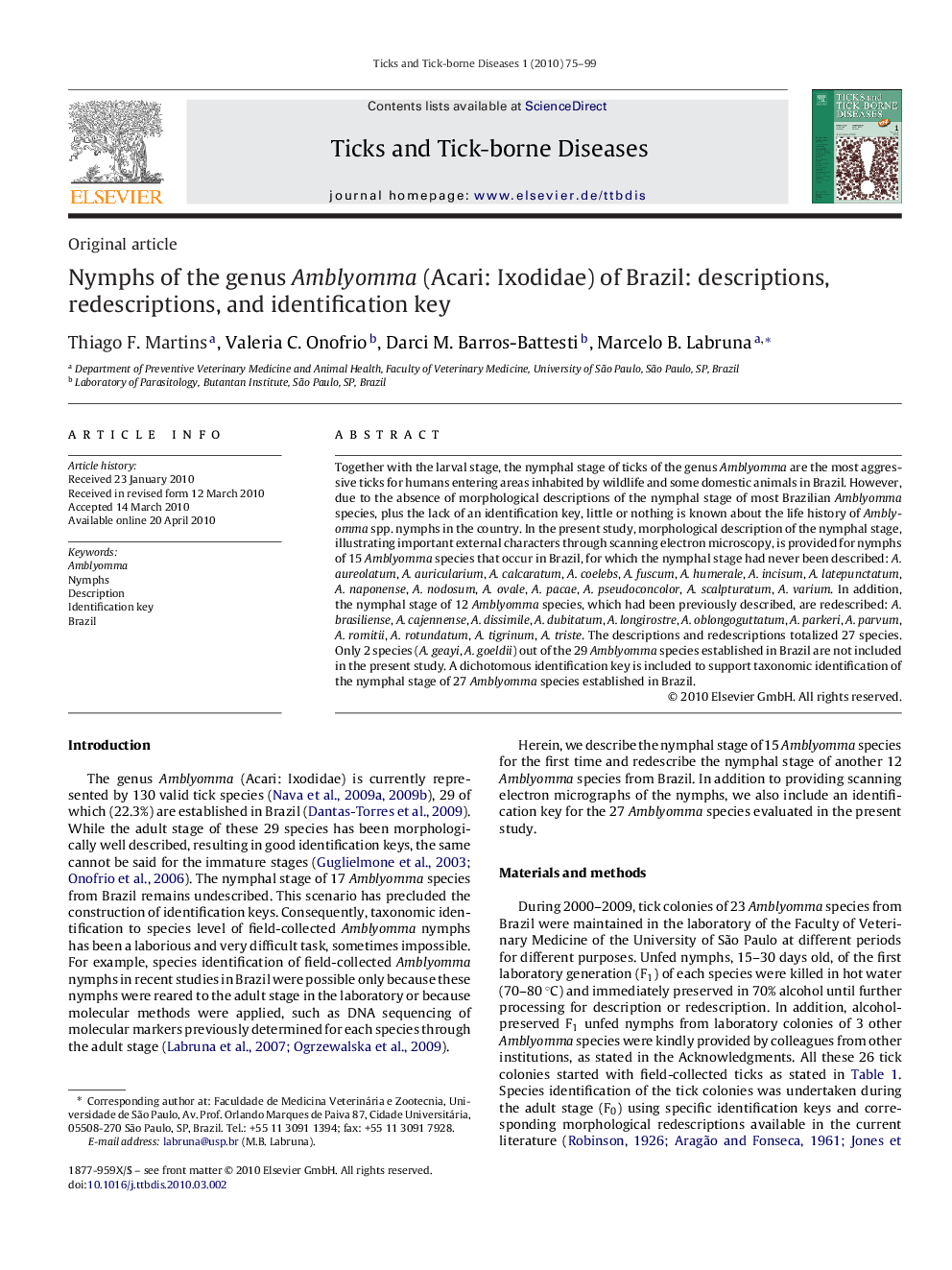| Article ID | Journal | Published Year | Pages | File Type |
|---|---|---|---|---|
| 2474321 | Ticks and Tick-borne Diseases | 2010 | 25 Pages |
Together with the larval stage, the nymphal stage of ticks of the genus Amblyomma are the most aggressive ticks for humans entering areas inhabited by wildlife and some domestic animals in Brazil. However, due to the absence of morphological descriptions of the nymphal stage of most Brazilian Amblyomma species, plus the lack of an identification key, little or nothing is known about the life history of Amblyomma spp. nymphs in the country. In the present study, morphological description of the nymphal stage, illustrating important external characters through scanning electron microscopy, is provided for nymphs of 15 Amblyomma species that occur in Brazil, for which the nymphal stage had never been described: A. aureolatum, A. auricularium, A. calcaratum, A. coelebs, A. fuscum, A. humerale, A. incisum, A. latepunctatum, A. naponense, A. nodosum, A. ovale, A. pacae, A. pseudoconcolor, A. scalpturatum, A. varium. In addition, the nymphal stage of 12 Amblyomma species, which had been previously described, are redescribed: A. brasiliense, A. cajennense, A. dissimile, A. dubitatum, A. longirostre, A. oblongoguttatum, A. parkeri, A. parvum, A. romitii, A. rotundatum, A. tigrinum, A. triste. The descriptions and redescriptions totalized 27 species. Only 2 species (A. geayi, A. goeldii) out of the 29 Amblyomma species established in Brazil are not included in the present study. A dichotomous identification key is included to support taxonomic identification of the nymphal stage of 27 Amblyomma species established in Brazil.
